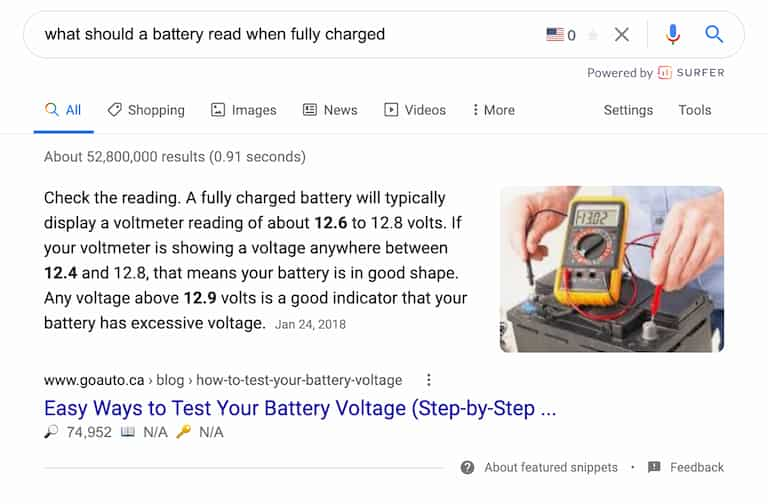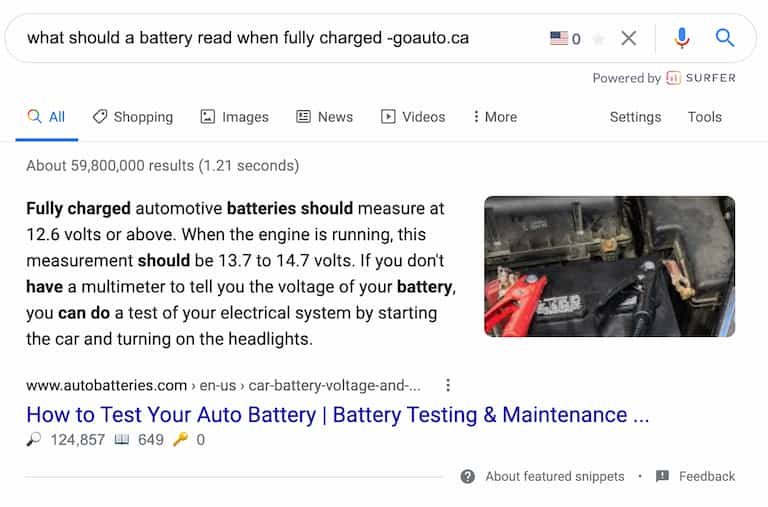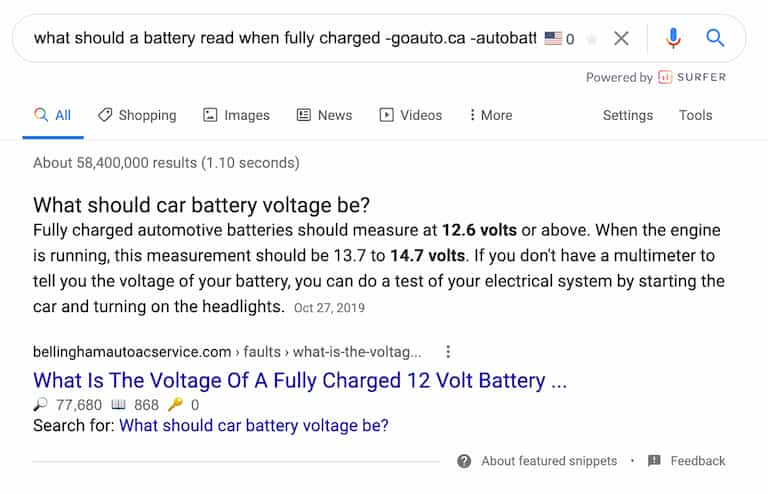White Hat Blogging is a participant in the Amazon Services LLC Associates Program, in addition, I am an independent Jasper Affiliate, not an employee. I receive referral payments from Jasper and possibly other affiliates.
When you are a new blog gaining access to the first page of the Search Engine Results Page (SERP) can be incredibly difficult. You have no track record showing Google and other Search Engines that you are useful, so how do you steal a Google Snippet from someone else?
The Google Snippet is a highly focused answer to a very specific question, many times you can rank for this without making it to page one making it invaluable to a new blog. Finding and taking advantage of this high ranking is important to a new blog who doesn’t link build.
Typically to take these snippets from other websites the focus is on looking at the current snippet for how “on target” it is.
This means understanding the question versus the current search intent and how complete an answer it actually is for the question.
The focus here is to find if it is weak or on target at all, if perfectly on target this is a sign to move to another keyword if targeting snippet only.
What is the Snippet Sniper Approach?
Since we know what the Google Snippet is and we know the criteria Google use to assign it the next thing is how to successfully take it from someone else.
Unfortunately there is no schema, no viable way to ensure you can take it but this approach will boost your opportunity to craft the best answer within the length Google give.
When you are looking at the search after the SERP has loaded you want to first make sure a snippet exists for the question, Google has not added snippets to all searches and typically only tends to provide them when an answer can be clear in under 300 characters.
Paragraph Snippets
These are my favorite snippet as they are the simplest ones to read and comprehend how they were given the snippet, whether you believe them to be a good answer or not doesn’t matter.

The intent helps you know what Google Searchers were looking for with that question, this may help you also clean up and guide content in a different manner than you initially believe.
In my “Snippet Sniper” approach I do the steps above reading and understanding what is currently winning the snippet, then I dive into looking at what the next snippet would be, that’s right we use Google against Google.
For this you want to change the search and add on a modifier to the search which will remove the current top answer, when this is done for most searches you will see a “second place” snippet.

I copy each of these snippets into a notepad that I have open so that I can see trending similarities within the answers and see if I understand the context in the content.
Then you can replicate this step over and over again, each time removing the URL that last had the snippet allowing Google to show you the next, copy them and move on until no more are found.

Now that I have between 1-5 snippets I will read each of them and look for the commonalities that need to be present for Google to consider it for the snippet area, this section I know I will HAVE to have.
Then I think about how to best build an answer with this included data to complete my thoughts and then I will begin to write a snippet. This ensures I cover what Google wants in the answer along with what I feel is imperative to the answer, hopefully enough to entice a click after.
Please note, I don’t bait with these answers, I always intend to answer this completely. Trying to add more content or remove to bait a click will hurt the chance of gaining the snippet.
We are hoping that these people are interested enough in the topic that they will want or need more information than what the 300 characters gives them, over time for me this has proven correct far more than not, contrary to many SEO Gurus will admit.
Featured Snippet Update of January 2020
This was the update that changed the landscape of the SERP, this update made it so that you couldn’t show the same URL on the snippet and in the Snippet position, this has led to some wild behaviors by SEO bros.
I would argue that this isn’t bad as your result still maintains a position on page 2 in most cases, so if the visitor doesn’t click your snippet position and goes to page 2 you could show again and have yet another chance to gain the click.
This needs to be clarified that the SAME URL will be de-duplicated (removed) from showing on page 1 also, but if you have very closely related posts you could still own multiple page one positions.
I would never recommended forcing Google to no make your data the snippet as this can only come back to bite you in the rear later, there is methods but those you can research if you are that firm on hurting your own rankings.
Final Thoughts on Googles Snippets
Everyone should be aiming to achieve snippets as that top spot is vital for many of the long tailed keywords that have few overall searches, each extra percent can make a big difference.
My goal is to write a snippet ready answer to every post that I create, whether a snippet exists or not at this point. This way should a snippet ever be granted to a keyword I target I stand a high chance to take it.
I would urge you to have the same methodology to building a snippet to ensure that you gain as many top of the page positions as possible, these have to be signals to Google that you know your topics hands down, thats how I want them to perceive me and my content!

